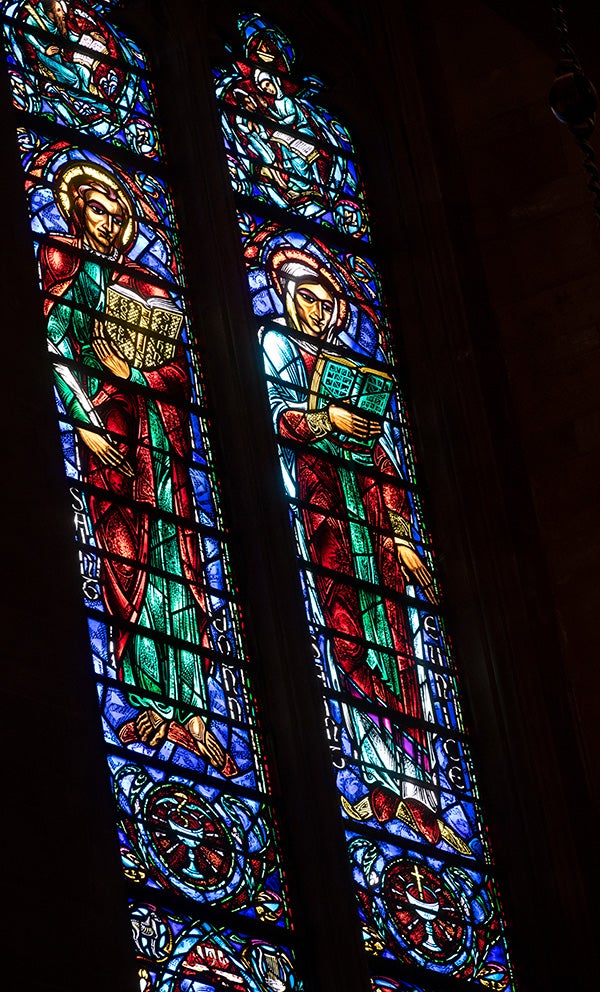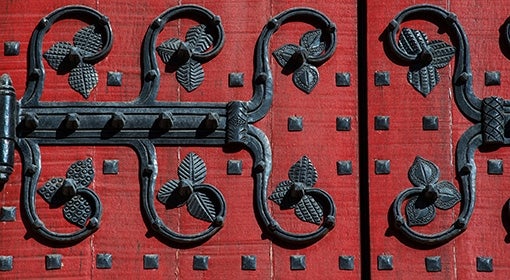Light dances through the majestic stained-glass windows as silence settles upon the chapel. The audience waits with bated breath. Softly, the low bass of singing voices rumbles through the air, then the whimsical notes of sopranos trickle in, quickly followed by shuffling feet and applause. The members of the campus a capella group Tonal Disruption are finally taking the stage.
As the sweet melodies of the group’s setlist fill the space and the audience sways along to the upbeat performance, Pitt senior Tommy Nguyen finds himself lost within the grandeur of Heinz Memorial Chapel.
Nguyen is the music director and co-founder of Tonal Disruption and a member of the Heinz Chapel Choir, so the gothic revival sanctuary has been an integral part of his college experience and a vessel for some of his most cherished memories at Pitt. He’s performed inside it dozens of times and each time has felt like an escape from the outside world. Now, as he is set to graduate, Nguyen is grateful for the historic structure.
“It’s very personalized and its handcraftsmanship shows. It's super special to me,” he says. “You can spend the whole day there and still get lost in all the stained glass.”
This year marks the 85th anniversary of the opening and dedication of the building, a gift from the Heinz family to the University. In that time, thousands of students like Nguyen have made memories inside its limestone walls — concerts, services, ceremonies and quiet moments. But octogenarian buildings need care and upkeep to maintain their majesty for future generations. So, the chapel’s recognizable spire is currently surrounded in scaffolding as it undergoes restoration. Work will continue throughout 2023.
 Drew Armstrong, director of architectural studies at the University, says that architecture — particularly familiar, unchanged features like those of the chapel — plays an integral role in maintaining relationships between a college campus and its people.
Drew Armstrong, director of architectural studies at the University, says that architecture — particularly familiar, unchanged features like those of the chapel — plays an integral role in maintaining relationships between a college campus and its people.
“As students, you feel very close to certain parts of the campus,” he says. “People do change, but having some buildings that stay the same helps maintain the strength of college communities.”
This was the intention of the Heinz family when it dedicated the chapel all those years ago, says Heinz Chapel Director Karen Sebolt. They wanted a place where students of all denominations could go to find “peace and calm and loveliness,” as Howard Heinz put it at the 1938 dedication.
For so many, including Nguyen, Sebolt and Armstrong, that feeling can be found in the intricate expanse of stained glass. The transept windows are among the tallest in the world and depict at least 391 identifiable figures, including writers, poets, scientists and activists.
“It’s important for people to know just how significant the chapel’s stained-glass windows are,” Armstrong says. “They represent different fields of inquiry, they include numerous female figures who were leaders in social justice, and they have really made a powerful impact on me personally.
“There's nothing quite like them.”
For students like Nguyen, who spent so much time admiring them, they are likely to evoke memories long after graduation.
“When people return to their campuses as alumni, they will remember relationships in places they occupied – places where they spent time together with friends,” Armstrong says. “So, I think that buildings like the Heinz Chapel are a highly significant part of university campuses in North America.”
Thanks, in part, to its spire’s careful restoration, that’s sure to remain true for decades to come.
This story was published on February 3, 2023. It is part of Pitt Magazine's Winter '23 issue.





